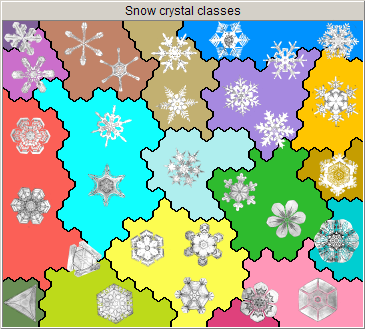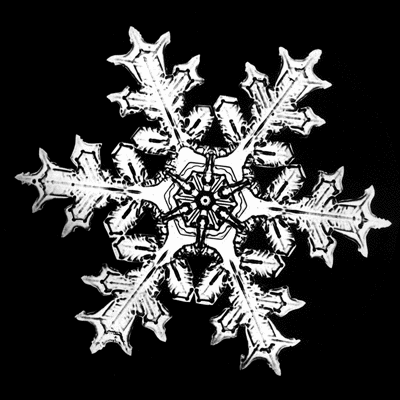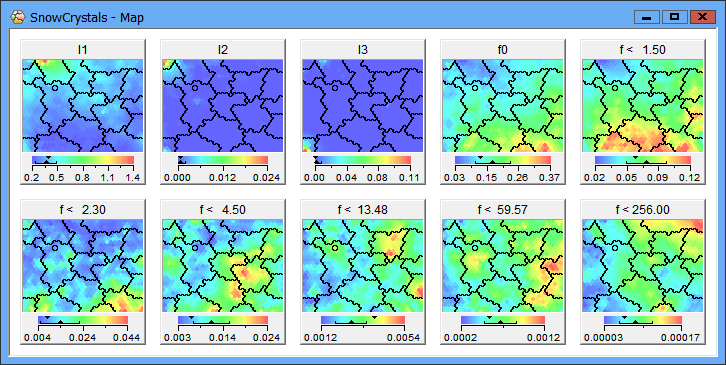Objective
This demo shows how photographic images can be ordered in a map with respect to their visual characteristics. In this example, images of snow crystals are ordered based on previous image preprocessing to determine similarity.
By clicking anywhere within the map, the user can open the corresponding image in a viewer. Clicking a nearby point in the map displays the most similar item to the selected image.
Advantages and benefit
Direct access to images – for example, of real estates, microchips, flowers, or faces – through an ordered map is a feature that can be applied to a wide range of fields. By ordering images based on similarity, images similar to any selected item can be viewed by simply clicking in the map. By using more sophisticated image preprocessing, additional detailed image information and qualitative data can be included as required by the specific application.
This showcase is inaccurate on mobile devices. Please switch to the desktop version.


Click anywhere in the map to see the snow crystal image contained in the corresponding microcluster.
 Click to enlarge and view the distribution of attributes.
Click to enlarge and view the distribution of attributes.
Data source and acknowledgement
We used a selection of 974 photos from a historical archive of snow crystal micrographs created by Wilson A. Bentley around 1917 in Jericho, Vermont, USA.
Visit the Wilson Bentley website to learn more about this “Snowflake Man” and purchase a CD with the public-domain photos. This demonstration is dedicated to Bentley's lifework and his legacy of stunning images.
Data preprocessing
After conversion of the original bitmap images into PNG format and cropping, a feature vector was determined for each image, consisting of the rotation invariant image moments up to third order and the mean amplitudes of 7 different frequency bands. A link variable was added to each feature vector for storing the URL of the corresponding image. Thus, the final data set consisted of 974 records with 11 attributes each.
